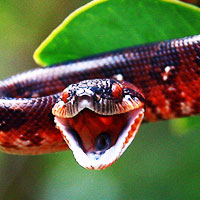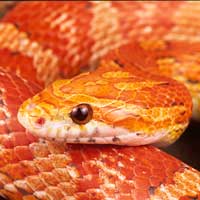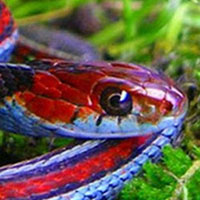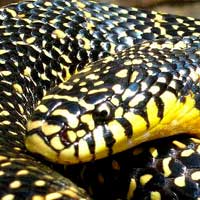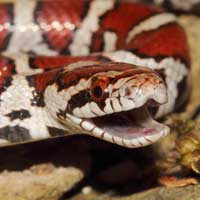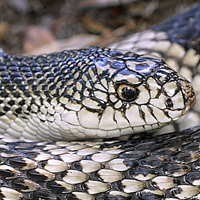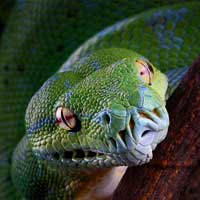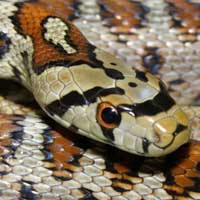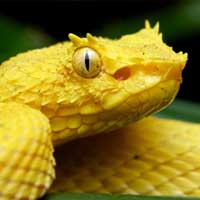All About the Pacific Ground Boa: A Comprehensive Guide
The Pacific Ground Boa is scientifically named Candoia carinata. It belongs to the Boidae family, which includes non-venomous constrictor snakes.
Scientific Name: Candoia carinata
Snake Family: Boidae
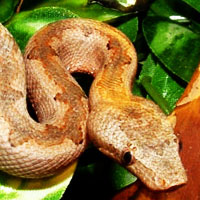
Pacific Ground Boa: An Introduction
The Pacific Ground Boa (Candoia carinata) is a fascinating and small-sized boa species native to the Pacific Islands. Known for its adaptability and unique appearance, this non-venomous snake is an excellent choice for experienced reptile keepers. Its manageable size and intriguing behavior make it a popular addition to exotic pet collections. In this guide, we’ll explore the habitat, diet, behavior, and care tips for the Pacific Ground Boa.
Discovering the Natural Habitat of the Pacific Ground Boa
The Pacific Ground Boa is native to the Pacific Islands, including Papua New Guinea and parts of Indonesia. This species thrives in tropical and subtropical environments, where it can burrow and hunt effectively.
| Habitat Feature | Description |
|---|---|
| Geographic Range | Pacific Islands, Papua New Guinea, Indonesia |
| Preferred Environment | Tropical forests, coastal regions, and scrublands |
| Climate | Warm and humid with a stable temperature |
What Do Pacific Ground Boas Eat?
The Pacific Ground Boa is a carnivore, feeding on small prey items in the wild. In captivity, replicating its natural diet is key to maintaining its health and well-being.
- Juveniles: Feed on small lizards or pinky mice every 5-7 days.
- Adults: Feed on larger rodents, such as fuzzy mice, every 10-14 days.
- Prey Size: Choose prey that matches the snake’s girth to avoid regurgitation.
- Hydration: Always provide fresh, clean water for drinking and soaking.
Behavior and Temperament of the Pacific Ground Boa
The Pacific Ground Boa is generally calm and docile, though it may exhibit defensive behaviors if it feels threatened. Its activity patterns make it an interesting species to observe.
- Nocturnal: Most active during the night, using heat-sensing pits to locate prey.
- Defensive Behavior: May hiss or coil when feeling threatened but rarely bites.
- Burrowing Nature: Prefers to stay hidden under leaf litter or substrate during the day.
Ensuring the Health and Longevity of the Pacific Ground Boa
With proper care, the Pacific Ground Boa can live for 10-15 years in captivity. Maintaining a clean and suitable environment is essential for its health.
| Health Issue | Symptoms | Prevention |
|---|---|---|
| Respiratory Infections | Open-mouth breathing, wheezing | Maintain proper humidity and temperature |
| Parasites | Visible mites, itching | Regular enclosure cleaning |
| Obesity | Excessive weight gain | Provide appropriately sized meals |
Reproductive Traits of the Pacific Ground Boa
The Pacific Ground Boa is ovoviviparous, giving birth to live young. Breeding these boas in captivity can be a rewarding experience for dedicated keepers.
- Mating Season: Late winter to early spring.
- Gestation Period: Approximately 6-8 months.
- Litter Size: Typically 5-12 young.
- Provide a stable temperature gradient and hiding spaces to encourage breeding.
Handling and Caring for the Pacific Ground Boa
Handling and caring for a Pacific Ground Boa requires patience and attention to its specific needs. Regular interaction and a well-maintained habitat ensure a healthy and stress-free snake.
- Maintain an enclosure temperature gradient of 75-85°F with a basking spot.
- Provide a humidity level of 60-80% to mimic its natural environment.
- Include hiding spots, branches, and a water dish for soaking.
- Handle gently and infrequently to avoid stress.
- Clean the enclosure regularly and monitor for any signs of illness.
